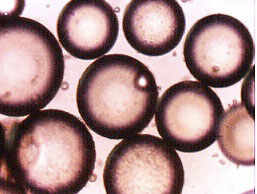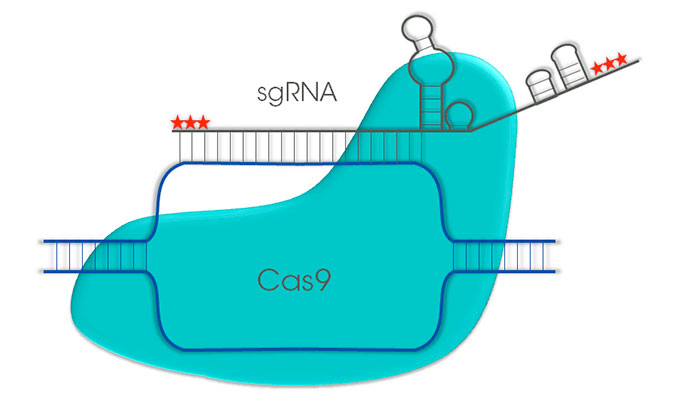Cytokines and growth factors that are produced by or have an effect on adipocytes and related peptide neuro-transmitters are central players in hunger vs. satiety balance and in eating behavior (1). Recent evidence shows that adipokines, and more generally mediators or indicators of inflammation (2), play roles in the development of insulin resistance (3), diabetes (4) and many other concomittant health problems associated with obesity, including hypertension, dyslipidemia and atherosclerosis (5).
This constellation of symptoms are often referred to as “metabolic syndrome”. All of them are associated with abdominal obesity, characterized by extensive subcutaneous and visceral deposition of white adipose tissue (6).

White adipose tissue is by no means an inert fat-storage depot, but could be better characterized as an endocrine organ, mediating complex signals of inflammation to nearby vital organs (7). Understanding the role of endocrine signaling by white adipose tissue, as mediated by adipokines, is critical to understanding and treating the myriad of diseases resulting from obesity.
Adipokines and cytokines affecting the physiology of adipose tissue are increasingly the focus of translational research projects and clinical studies. Monitoring obesity and other metabolic syndrome biomarkers is now more convenient with new protein profiling and quantification experimental strategies. These antibody-based assays complement the existing arsenal of proteomics tools.
Metabolic syndrome-related protein profiling
Immuno-assays now allow convenient profiling of protein markers involved in obesity from various biological samples (serum, cell culture supernant, body fluids, cell lysate, tissue lysate). The comparison of “protein signatures” between two samples (treated vs. untreated for example) thus becomes much easier. RayBiotech arrays (membrane or glass) allow the detection of 62 adipokines in one experiment (RayBio Sandwich-based Human Obesity Membrane or Glass-Slide Obesity Arrays ), or even up to 182 adipokines (RayBio Label-based Human ObesityMembrane or Glass-Slide Obesity Arrays).

Obesity Marker quantification by Array or ELISA
Sometimes, a more quantitative approach of the samples is required. New immuno-assays have able been developed to quantify in parallel multiple obesity biomarkers (multiplex quantification) such as the Raybio Quantibody Human Obesity arrays.
As an example, the Quantibody Human Obesity Adipokine array 1 allows multiplex quantification of 10 biomarkers (IGF-I, IL-1beta, IL-6, IL-8, Insulin, Leptin, MCP-1, PAI-1, Resistin, TNF alpha) in one run from only 50 – 100 µl per array (CV<20%).
You might prefer to quantify single Obesity biomarkers through robust ELISA kits (ex. Human Leptin ELISA kit, Mouse Leptin (Ob) ELISA kit. EIA and ELISA kits compatible with serum, plasma, culture supernantant and cell lysates are also available for other obesity-related targets (ex. Adiponutrin, Brain Natriuretic Peptide (BNP), Cholecystokinin (CCK), C-Peptide, Gastrin EIA, Ghrelin, Neuropeptide Y, Glucagon, PYY…). All these immuno-assasy are validated by specialized manufacturers like Raybiotech, Assay Biotech, BioSensis or Elabscience and compatible now with various species (Human, Mouse, Rat, Sheep…).
Ready-to-use immuno-assays… or a service provider?
 These Obesity Immuno-assays are available as ready-to-use kits but they can also be outsourced to Certified Service Laboratory Providers. In that case, researchers just send their samples and in return receive the experimental data set. To ensure top quality in the results given, Raybio’s service providers successfully complete training and certification programs for testing samples with dedicated antibody array products and receive the “RayBiotech Certified Array Service Providers” yellow award. In Europe, tebu-bio laboratories (located in Le Perray-en-Yvelines) were among the first laboratories in the world to be certified by Raybiotech in 2012. tebu-bio’s services also cover Quansys BioSciences and FullMoon BioSystems technologies for outsourcing protein profiling and quantification.
These Obesity Immuno-assays are available as ready-to-use kits but they can also be outsourced to Certified Service Laboratory Providers. In that case, researchers just send their samples and in return receive the experimental data set. To ensure top quality in the results given, Raybio’s service providers successfully complete training and certification programs for testing samples with dedicated antibody array products and receive the “RayBiotech Certified Array Service Providers” yellow award. In Europe, tebu-bio laboratories (located in Le Perray-en-Yvelines) were among the first laboratories in the world to be certified by Raybiotech in 2012. tebu-bio’s services also cover Quansys BioSciences and FullMoon BioSystems technologies for outsourcing protein profiling and quantification.
What about you?
Which obesity and metabolic syndrome biomarkers are you following?
References
- Murphy & Bloom, Nature. 2006
- Fantuzzi, J Allerg Clin Immunol. 2005
- Shoelson, et al. J Clin Invest. 2006
- Tataranni & Ortega. Diabetes. 2005
- Van Gaal, et al. Nature. 2006
- Deprés and Lemieux. Nature. 2006
- Trujillo & Scherer. Endo Rev. 2006



